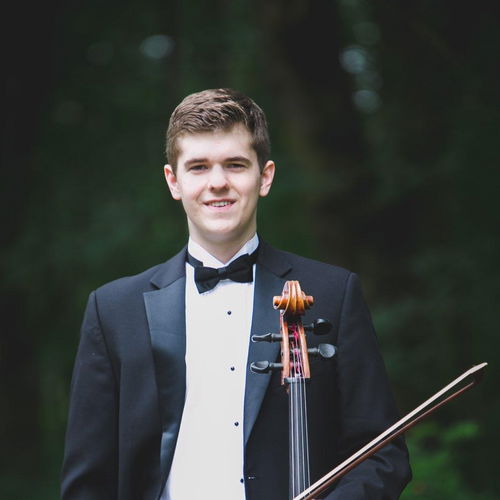From Darkness to Light
Details
Isaac Berglind full profile / Solo cello / 1 musician
Full program notes
A Solo Cello Journey through Bach
Johann Sebastian Bach (1685–1750)
Cello Suite No. 1 in G major, BWV 1007
Prélude – Allemande – Courante – Sarabande – Menuets I & II – Gigue
Cello Suite No. 2 in D minor, BWV 1008
Prélude – Allemande – Courante – Sarabande – Menuets I & II – Gigue
Cello Suite No. 6 in D major, BWV 1012
Prélude – Allemande – Courante – Sarabande – Gavottes I & II – Gigue
Few works in the cello repertoire carry as much expressive range as Bach’s six solo cello suites. Each one offers a complete emotional world, yet together they trace a remarkable arc of human experience.
The recital begins with the beloved Suite No. 1 in G major, the prelude of which is perhaps the most well-known piece ever written for solo cello. It unfolds in a continuous stream of arpeggios—ever flowing, never resting—yet always shifting in harmony and mood. Often the first suite cellists encounter, it captures Bach’s gift for combining dance, structure, and joy into music that feels timeless.
From this warmth and openness, the mood turns inward with Suite No. 2 in D minor. Some scholars have speculated that it may have been written in response to the death of Bach’s first wife, Maria Barbara, who died suddenly in 1720 while Bach was away. Whether or not this connection is historically certain, the music itself speaks of profound loss. Yet within its gravity there is also resilience—a quiet strength that seems to endure through sorrow.
Finally, the program moves into radiant light with the Suite No. 6 in D major, originally written for a five-string cello but performed today on the modern four-string instrument. Bach’s instrument included an added high E string, expanding the cello’s range and resonance. On today’s cello, all the same notes are still played. The result is music of soaring lines, open textures, and a joyful character that seems to overflow the instrument itself.
Historical context
Bach’s six cello suites are built like little dance collections. After the opening Prelude, each suite continues with a series of dances—an Allemande from Germany, a Courante from France or Italy, a slow and stately Sarabande from Spain, and lively dances like Minuets, Gavottes, or Gigues, each rooted in different corners of Europe. These weren’t meant for actual dancing by Bach’s time, but he used their rhythms and characters to give each movement its own personality. In a way, the cello suites bring together an international meeting of styles—Bach weaving them into music that feels both timeless and deeply human.
Videos from this player
Other programs from this ensemble
- Musician profile: Rainier Duo
-
Instruments: Piano-Cello Duo
- Musicians: Isaac Berglind, Yuan Zhou, piano

 Continue with Facebook
Continue with Facebook
 Continue with Google
Continue with Google
 Continue with Apple
Continue with Apple

